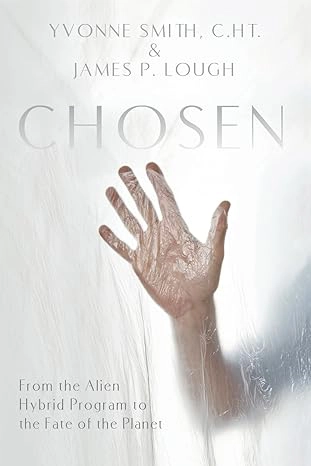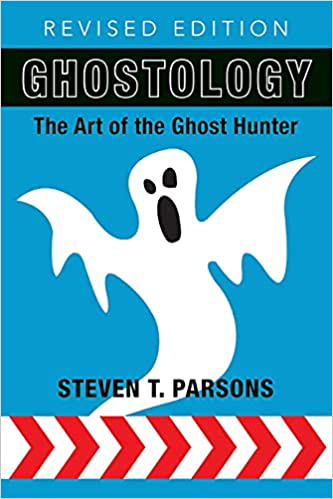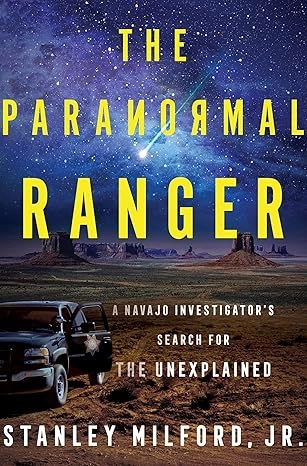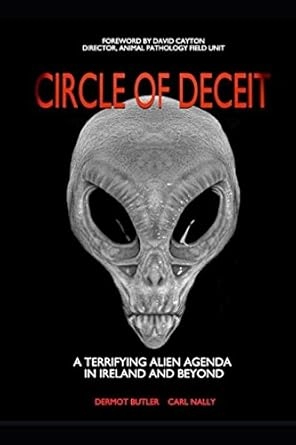What’s Behind Ghost Sightings? A Look at the Psychology of Paranormal Encounters
Science/Medical/Technology
Friday 25th, October 2024
4 minute read.
In cultures worldwide, ghost stories persist, from eerie apparitions to chilling noises heard in empty spaces. Despite the fascination, no scientific evidence supports the existence of ghosts, spirits, or any paranormal entities. So why do some people genuinely believe they've had encounters with ghosts?
Christopher French, Professor Emeritus of Psychology at Goldsmiths, University of London, has recently addressed this phenomenon in his new book exploring the science behind the paranormal. According to French, many ghost sightings are “sincere misinterpretations of things that do have a natural explanation”. As he told Live Science, “Just because you can’t think of an explanation doesn’t mean there isn’t one”.
French, a noted sceptic in paranormal studies, has long investigated why people perceive ghostly experiences. His research highlights several psychological and neurological factors that could explain such encounters. These include hallucinations-seeing or hearing things that aren’t present; false memories-recollections of events that never occurred; and pareidolia-the brain's tendency to identify meaningful patterns, such as faces, in random objects.
The brain is known to misinterpret stimuli, especially in ambiguous situations. This cognitive bias can lead people to assume they’ve experienced something supernatural, particularly if they’re inclined to believe in ghosts or other legendary beings.
In addition, certain medical conditions make ghostly encounters more plausible. One phenomenon French has studied is sleep paralysis, in which individuals feel they are awake but cannot move, often sensing a threatening presence. As French describes, "It’s as if your mind wakes up, but your body doesn’t. You’ve got this interesting mix of normal waking consciousness and dream consciousness, and the contents of the dream are coming through into waking consciousness. The results can be absolutely terrifying".
If someone experiences sleep paralysis without prior knowledge of the condition, it’s not unreasonable for them to interpret it as a supernatural episode. During sleep paralysis, the figure they "see" often takes the form of a shadow in a corner, rather than a recognisable human.
Films and literature frequently depict ghosts as fully-formed, transparent human figures. However, these kinds of sightings are uncommon, according to researchers. Johannes Dillinger, a Professor of Early Modern History at Oxford Brookes University, studies ghost beliefs in Western societies over time. Dillinger told Live Science that the most frequently reported hauntings involve invisible entities, or poltergeists, which announce their presence through unexplained sounds, typically heard at night. "Many, many ghosts over the centuries were mere poltergeists, meaning they remained invisible throughout. We only think they are there because we hear strange noises", he explained.
Historically, ghost beliefs have evolved significantly. Before 1800, people saw ghosts as entities with unfinished business that needed completion in a literal sense. "Ghosts usually wanted people to find their treasures and put them to some good use", Dillinger said, highlighting how ghosts were believed to demand action from the living.
The 19th century marked a turning point in how people related to ghosts, driven by the rise of spiritualism and the belief that it was possible to communicate with the dead. According to the Science History Institute, these ideas fostered a shift, with people hoping for comfort and closure from ghosts rather than fearing their demands. Today, the notion of ghosts remains a widely accepted explanation for strange sounds in darkened rooms. As Dillinger summed it up, "The ghost is really that thing that goes bump in the night".
While belief in ghosts has transformed over centuries, psychology continues to shed light on the explanations behind such encounters. Research suggests that many so-called paranormal experiences stem from natural psychological and neurological mechanisms-highlighting how the unknown can be perceived through a lens shaped by history, culture, and our own minds.
Christopher French, Professor Emeritus of Psychology at Goldsmiths, University of London, has recently addressed this phenomenon in his new book exploring the science behind the paranormal. According to French, many ghost sightings are “sincere misinterpretations of things that do have a natural explanation”. As he told Live Science, “Just because you can’t think of an explanation doesn’t mean there isn’t one”.
French, a noted sceptic in paranormal studies, has long investigated why people perceive ghostly experiences. His research highlights several psychological and neurological factors that could explain such encounters. These include hallucinations-seeing or hearing things that aren’t present; false memories-recollections of events that never occurred; and pareidolia-the brain's tendency to identify meaningful patterns, such as faces, in random objects.
The brain is known to misinterpret stimuli, especially in ambiguous situations. This cognitive bias can lead people to assume they’ve experienced something supernatural, particularly if they’re inclined to believe in ghosts or other legendary beings.
In addition, certain medical conditions make ghostly encounters more plausible. One phenomenon French has studied is sleep paralysis, in which individuals feel they are awake but cannot move, often sensing a threatening presence. As French describes, "It’s as if your mind wakes up, but your body doesn’t. You’ve got this interesting mix of normal waking consciousness and dream consciousness, and the contents of the dream are coming through into waking consciousness. The results can be absolutely terrifying".
If someone experiences sleep paralysis without prior knowledge of the condition, it’s not unreasonable for them to interpret it as a supernatural episode. During sleep paralysis, the figure they "see" often takes the form of a shadow in a corner, rather than a recognisable human.
Films and literature frequently depict ghosts as fully-formed, transparent human figures. However, these kinds of sightings are uncommon, according to researchers. Johannes Dillinger, a Professor of Early Modern History at Oxford Brookes University, studies ghost beliefs in Western societies over time. Dillinger told Live Science that the most frequently reported hauntings involve invisible entities, or poltergeists, which announce their presence through unexplained sounds, typically heard at night. "Many, many ghosts over the centuries were mere poltergeists, meaning they remained invisible throughout. We only think they are there because we hear strange noises", he explained.
Historically, ghost beliefs have evolved significantly. Before 1800, people saw ghosts as entities with unfinished business that needed completion in a literal sense. "Ghosts usually wanted people to find their treasures and put them to some good use", Dillinger said, highlighting how ghosts were believed to demand action from the living.
The 19th century marked a turning point in how people related to ghosts, driven by the rise of spiritualism and the belief that it was possible to communicate with the dead. According to the Science History Institute, these ideas fostered a shift, with people hoping for comfort and closure from ghosts rather than fearing their demands. Today, the notion of ghosts remains a widely accepted explanation for strange sounds in darkened rooms. As Dillinger summed it up, "The ghost is really that thing that goes bump in the night".
While belief in ghosts has transformed over centuries, psychology continues to shed light on the explanations behind such encounters. Research suggests that many so-called paranormal experiences stem from natural psychological and neurological mechanisms-highlighting how the unknown can be perceived through a lens shaped by history, culture, and our own minds.



